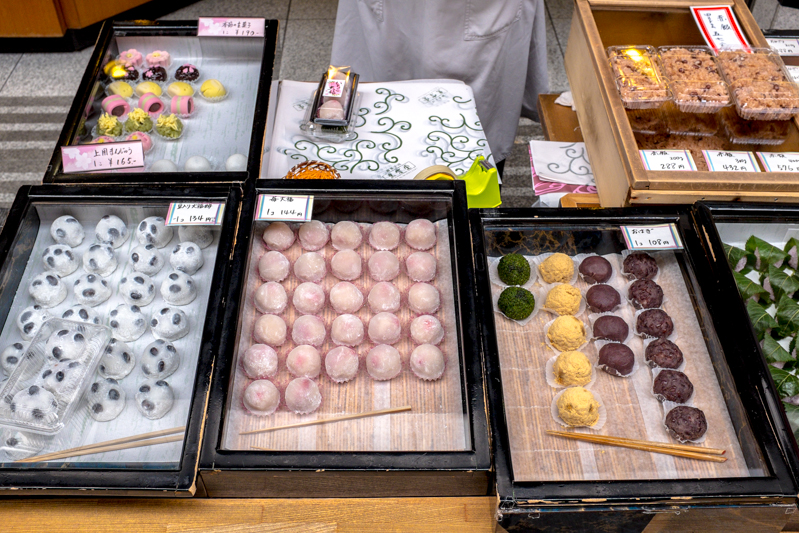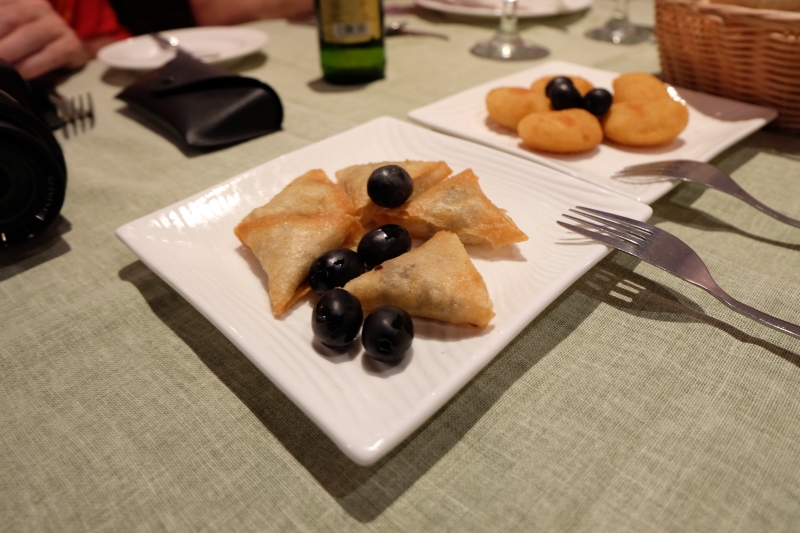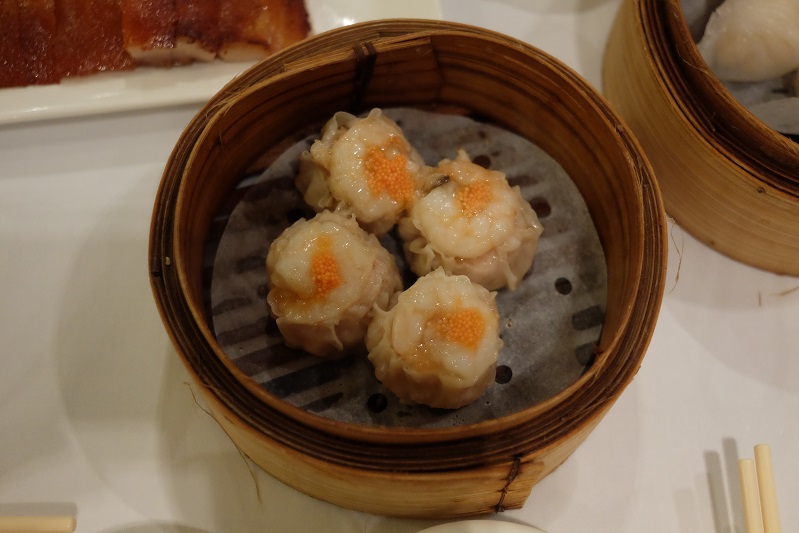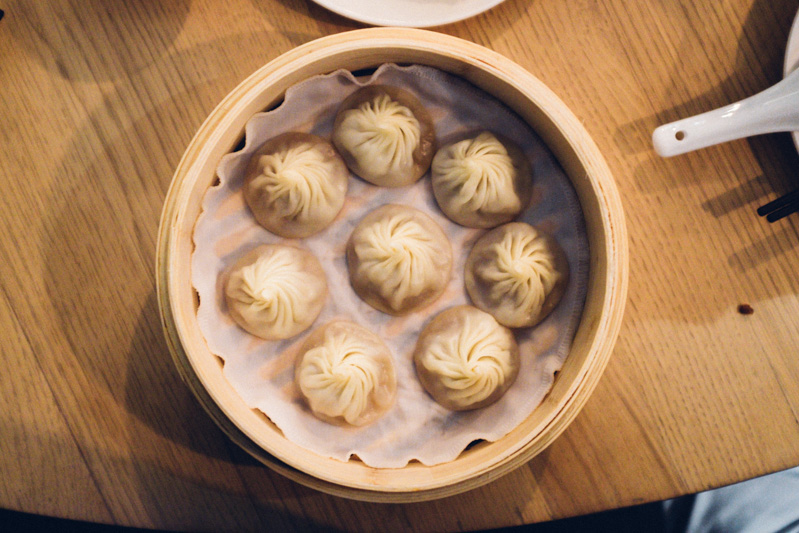There are many contenders for the best dumplings in the world. By the best we don’t mean best places to eat dumplings, but rather the best kinds of dumplings. But what is a dumpling? Depending on where you are in the world, the food that first comes to mind when the world “dumpling” is mentioned can vary quite a bit. In Australia, the world dumpling tends to bring to mind the dumplings of China such as Xiao Long Bao and the Dim Sum dumplings of Hong Kong, but this is just the tip of the iceberg. At its core, a dumpling is simply a small piece of dough that is either wrapped around some other ingredients, or mixed with other components. Dumplings can be eaten alone, as part of a soup or other dish, they can be sweet or savoury, boiled, fried, simmered or steamed. Unsurprisingly, given the great latitude as to what can be considered a dumpling, it’s a food item that’s common in many cuisines around the world. Let us take you on a journey around the world, with our selection of the best 65 dumplings around the world.
What’s your favourite dumpling? Is there a dumpling that you love that isn’t on this list? Let us know in the comments section below.
Aushak – Afghanistan
Aushak is a dish that contain pasta based dumplings filled with scallion and served with a meat based tomato sauce (similar to bolognaise), topped with yoghurt and dried mint.
Banh Bot Loc – Vietnam
Banh Bot Loc are a small, translucent tapioca based dumpling with a chewy exterior that are usually eaten as a snack or appetiser. Generally filled with shrimp and pork belly, they are steamed before being topped with fried onions and served with sweet chilli fish sauce.
Bawan – Taiwan
Bawan, or ba-wan, are a popular Taiwanese street food that consists of a 6-8 cm diameter disk-shaped translucent dough made using corn starch, sweet potato starch and rice flour. Fillings vary by region, with one of the most common being a mixture of pork, bamboo shoots, and shiitake mushrooms. Bawan are generally served with a sweet and savoury sauce.
Jamaican Patty – Jamaica
The Jamaican Patty is a baked pastry that’s generally filled with beef and spices, however other fillings such as chicken, pork, lamb, fish can also be used. It resulted from colonial times, when the Cornish Pastie was altered using cumin, curry seasonings and hot peppers. The Jamaican Patty is usually eaten as a main meal, but can also be made in bite size portions to be used as finger food at parties.
Belishi – Uzbekistan
Belishi are a donut-like dumpling common in Uzbekistan. The dumpling is usually filled with meat and onion, with the dough fried until it is soft and fluffy on the inside, and crisp on the outside.
Boraki – Armenia
The Armenian Boraki is a little different from many of the other types of dumplings. When the Boraki is made the meat is pre-cooked in oil then rolled into small cylinders with dough. The dumpling is then lightly boiled in water then fried. Traditionally Boraki is served with sour yoghurt and sprinkled with chopped garlic.
Bryndzové Halušky – Slovakia
Bryndzové Halušky is a meal coinciding of hearty Slovakian potato dumplings mixed with soft sheep cheese and sprinkled with bacon/lardon. This Slovakian dumpling is quite similar to the Italian gnocchi is consistency.
Buuz – Mongolia
Buzz is a steamed mutton or beef dumpling which is traditionally eaten on Mongolian New Year. The dumpling is comprised of a ball of minced meat surround with dough. During folding a small opening is made at the top of the Buuz. Once steamed, the dough acts like a pocket to catch all the juices.
Cepelinai – Lithuania
Cepelinai is a Lithuania dumpling made from grated and riced potatoes. The potatoes are usually stuffed with ground meat and then carefully boiled. After boiling they are served with sour cream and bacon.
Cha Siu Bao – China

Cha Siu Bao is a pork filled bun which is either steamed or baked. The dough used to make Cha Siu Bao is quite unique as it uses yeast and baking powder as raising agents which gives it its slightly dense texture.
Chuchvara – Uzbekistan
Chuchvara is small unleavened meat filled dumpling from Uzbekistan. The dumpling was created to comply with religious dietary restrictions and as such it never contains pork. Chuchvara is typically cooked in a meat broth until the dumpling rise to the surface. Once it has finished cooking, it is served with vinegar or sour cream.
Cornish Pastie – England
Cornish pasties were created in Cornwall in the United Kingdom, and only pasties which have been made in Cornwall are allowed to be called Cornish. The pastie consists of uncooked meat and vegetables which are filled into a short crust pastry which is then shaped into a semi-circle and baked.
Coxinhas – Brazil
Coxinhas are a fried Brazilian dumpling consisting of chopped or shredded chicken covered in dough. This dumpling looks a little odd as it is moulded into a shape resembling a chicken leg.
Daifuku – Japan

Daifuku is a sweet Japanese dessert that is made with a glutinous rice cake/mochi which is stuffed with a sweet filling such as red bean paste and covered in a fine layer of corn starch. They are available in a range of colours and fillings, the availability of which changes with the seasons.
Dim Sim – Australia
Dim Sims are a common Australian dumpling found at most fish and chip shops, service stations and Chinese restaurants, especially in Melbourne. This variety of dumpling generally contains minced pork or lamb and cabbage covered in a thick dough skin. The shape of these dumpling are similar to the traditional shumai dumplings. Dim Sims can either be steamed or fried and are often served with soy sauce or tomato ketchup.
Empanada – Argentina

This famous street food is common in many parts of Latin America but actually originated in Spain. Empanadas are pastry-based and can be filled with with anything from meat to fruits to vegetables. These are served hot or cold and are good for any time of the year.
Fara – India
Sometimes called Indian dumplings, fara, also known as muthia, are dumplings made of rice flour and commonly made with left over rice and seasoned with chilli flakes and sesame seeds. Fara is served hot and eaten all year round.
Fatayer – Palestine
Described by some as a ‘meat pie’, fatayer is an Arab cuisine made from flour based dough and filled with, in addition to meat, spinach or cheese. This Middle Eastern pie can be surprisingly light and healthy depending on the filling.
Forfar Bridies – Scotland
This savoury pie, also known widely as Bridies (albeit with a slightly different recipe), originated in Scotland and for the forfar variety, uses shortcrust pastry and is often filled with beef suet, steak (minced) and butter. Forfar Bridies have a horseshoe shape, are served hot, and can be often found in UK bakeries.
Fufu – Ghana
Often served with soup, fufu comes from West Africa, is flour-based, and served as a round slab of dough. These balls are then added by hand to soup upon eating.
Gnocchi – Italy

These dumplings come from Italy and are often an alternative to pasta. Made from semolina and potatoes and served hot, gnocchi recipes can also include cheese, eggs, and breadcrumbs.
Gyōza – Japan

This Japanese variation on the Chinese jiaozi is pan-fried and commonly ear-shaped. These can be filled with pork, fish, and vegetables, and often have a stronger garlic texture and are thinner than jiaozi. Gyōza are eaten all year round.
Har Gow – China

Har Gow are a closed, purse-shaped dumpling filled with prawn and often pork, with a skin made of potato and wheat starch that turns translucent when steamed. These are often amongst the most expensive items on dim sum menus because they need to be made by hand on the day they are consumed.
Jiaozi – China

Jiaozi is actually the Chinese word for dumpling so this term is often used as a catch-all term for this cuisine. Most commonly this refers to the standard dumpling that one would find in a Chinese (as distinct from Cantonese) dumpling restaurant and is made by wrapping meat or vegetables in a thin piece of dough which is sealed by pressing the edges together. Jiaozi are available in boiled, steamed or fried form with a variety of fillings including pork, chicken, shrimp, beef or fish. They are usually eaten with a mix of soy sauce and vinegar or hot chilli sauce.
Khinkali – Georgia
Consumed across the Caucasus area, Khinkali is a steamed “purse-like” dumpling traditionally filled with minced meat (lamb or beef mixed with pork), onions, chilli and cumin. As a result of the cooking process these are juicy like the Chinese xiao long bao and are generally eaten with bare hands (the use of utensils is considered impolite), taking a bite first to suck out the juices and prevent the dumpling from bursting.
Khuushuur – Mongolia
Khuushuur are a round pocket-style dumpling made using beef or mutton mixed with onion, garlic and a range of other spices which is folded into the dough and then fried. They are typically eaten by hand and are believed by some to stimulate blood circulation and also cure a range of medical conditions.
Knish – Ukraine
Knish are a snack/street food originating from Eastern Europe that resemble baked pastry foods such as the Cornish Pasty. Typically filled with mashed potato, ground meat, sauerkraut, cheese and vegetables, knish can be baked, grilled or deep fried. Knish were brought to the United States by immigrants from the area and are common in areas with large Jewish populations.
Knödel – Germany
Knödel are boiled dumplings originating from Germany and now found in many Central European countries. Unlike many other dumplings, rather than being made from meat filling in dough, knödel are made by mixing the ingredients together, shaping into dumplings and then boiling. Knödel are usually made from flour, bread or potatoes but other versions including meatballs in soup and sweet plum dumplings exist.
Kreplach – Israel
Kreplach are a ravioliesque dumpling of Jewish origin, made from ground meat, mashed potatoes and other fillings in a thin dough which are then boiled and served in chicken soup. These are traditionally served on Rosh Hashanah, which is the meal eaten before the fast on Yom Kippur (the holiest day on the Jewish calendar).
Kroppkakor – Sweden
Kroppkakor are potato dumplings filled with onions and pork or bacon, boiled gently and then served with melted butter and lingonberry jam (think cranberry sauce). An alternative preparation is to cut the boiled dumplings in half and fry in butter. These are most commonly found in the southern regions of Sweden.
Kubba – Iraq
Kubba (or Kibbeh) are torpedo-shaped croquette-style dumplings filled with minced meat (usually beef or lamb), Middle Eastern spices and other fillings like pine nuts, sultanas or peas. The Iraqi version, called Kubba Halab in homage to the Syrian city of Halab has a coating made from rice but other versions can be coated in breadcrumbs or cracked wheat. Kubba can also be found in a number of Latin American countries where they were introduced through migration.
Mandu – Korea
Mandu are Korean dumplings similar in style to the Chinese jiaozi and are usually filled with minced meat, tofu, onions, garlic and ginger and then served with kimchi and a dipping sauce made from a mix of soy sauce, vinegar and chilli. As is the case with jiaozi, mandu can be boiled, steamed or pan fried.
Manti – Turkey
Manti can be found in either boiled or steamed form and are made from spiced lamb or beef wrapped in dough. The size and shape of manti vary significantly by region but typically they are similar in form to the Chinese jiaozi. According to some historians manti were carried in frozen or dried form by Mongol horsemen who could then quickly boil them over a campfire for dinner. In the modern age manti are a common street food in Central Asia typically served with butter, sour cream or a sauce.
Maultaschen – Germany
Maultaschen resemble large ravioli and are made from minced meat, smoked meat, spinach, bread crumbs, onions and spices enclosed in pasta dough. These are traditionally served in one of three ways, cut into slices and pan fried with onions and scrambled eggs, boiled and served in a soup or with butter and onions. Maultaschen are sometimes (jokingly) associated with days such as Lent when Christians are supposed to refrain from eating meat as the meat is “hidden” under the pasta dough.
Modak – India
Modak are a sweet dumpling made from grated coconut and cane sugar in a rice flour dough and then fried or steamed. Modak are said to be the favourite food of the Hindu god Ganesh and as a result are used in many worship ceremonies.
Momo – Nepal
Momo are another type of dumpling that resemble the classic Chinese xiao long bao, made from minced meat which can be anything ranging from chicken and pork to yak and buffalo and often also cabbage, paneer or other cheese and potatoes wrapped in a rice and flour dough. Versions of momo without filling also exist. Momo can be steamed or fried and are served with a tomato-based dipping sauce. These dumplings can be found across much of North Asia and India and the fillings generally reflect locally available ingredients.
Mon Lone Yae Pow – Myanmar
Mote Lone Yay Pow, or “snack that floats on water”, is a sweet rice dumpling that is traditionally made to celebrate the Burmese New Year. The recipe is simple, comprising rice flour, salt and palm sugar which is mixed, shaped into dumplings and boiled. Sometimes birds eye chilies will be secretly inserted randomly into a batch of dumplings to provide an extra surprise kick for unsuspecting friends!
Pangsit – Indonesia
See “Wonton – China”. Indonesian Pangsit are usually served fried with Chinese noodles.
Pantrucas – Chile
Pantrucas are made using a dough made from flour, water and oil. The dough is cut into irregular pieces and rather than being eaten by itself, is mixed in with verduras soup or beef stock to give the soup some bulk.
Panzarotti – Italy
Originating in Southern and Central Italy, Panzarotti is very similar to calzone, however it is fried (and sometimes boiled) rather than baked. Some people actually call them fried pizzas. Fillings match what you’d expect to find used for toppings on a pizza – tomato and mozzarella, spinach, mushrooms, baby corn and ham.
Papa Rellena – Peru
Papa Rellena are made from potato dough and are popular in Peru and other Latin American countries. They are filled with onions, beef, hard-boiled eggs, and other spices. These are deep fried and are also known as a type of croquette.
Pasteles – Dominican Replublic
Served In many Latin American countries, the Pasteles is similar to the pasty or the calzone. Preparation and style varies by country, and the filling can be anything from ground pork (Dominican Republic) to beef or chicken (El Salvador). Pasteles are often served on a banana leaf.
Pastels – Brazil
Common to Brazil, Pastels come in a half circle and are often fast or street food in the country. These are made from pastry and come in savory and sweet fillings.
Pelmeni – Russia
Dubbed ‘ear bread’, this flour-based dumpling is common in Russia and is often filled with various different types of meat. The use of Pelmeni is often to preserve meat during long Siberian winters.
Pierogi – Poland

Common throughout Eastern Europe, Pierogi are made by wrapping parcels of unleavened dough around a filling and cooking in boiling water, in a similar manner to pasta. Fillings can be sweet or savoury – common fillings include potato, sauerkraut, ground meat, cheese and fruits. They are often topped with fried onions, melted butter, sour cream or apple sauce. A common Polish topping is sour cream that has been sweetened with sugar.
Pitepalt – Sweden
Pietpalt is a meat filled dumpling, generally made using raw potatoes and barley flour. It’s eaten simply with a bit of salt, butter and lingonberry jam. Pork is a common addition, and there’s a version that adds blood to the mixture that is known as blodpalt.
Raspeball – Norway
Raspeball is a traditional boiled Norwegian potato dumpling. The dumpling is often served with boiled lamb, pork, butter, sour cream or sausages. A very hearty dish for those cold Scandinavian winters.
Ravioli – Italy

Ravioli is a variety of Italian dumpling that consists of a filling sealed between a thin layer of pasta dough. Ravioli can be fried or boiled and is served in either broth or a pasta sauce. This variety of dumpling can be filled with meat, cheese or vegetables.
Runsa – Germany
Runza, also commonly known as bierock, varies wildly in size, from small dumplings to bread-loaf sized delicacies. They are essentially a yeast based bread dough filled with a mixture of beef, pork, cabbage or sauerkraut, onions, and spices. It actually originated in Russia and is popular in parts of the United States such as Nebraska and Kansas where many Russian Germans immigrated.
Sambusa – Saudi Arabia
Sambusa is a fried Saudi Arabian dumpling normally eaten through the month of Ramadan. Sambusa can be filled with ground beef or chicken, spiced potatoes, onions, carrots, lentils, or cheese. It’s very similar to the Indian Samosa.
Samosa – India

Samosa is a fried or baked Indian dumpling which can be filled with spiced potatoes, onions, pea, lentils and/or meat. Indian samosas are typically vegetarian and are often served with mint sauce or chutney.
Shish Barak – Lebanon
Shish Barak is a Lebanese dish comprised of small meat dumplings cooked in a plain yoghurt stew. This dish is often made in spring with goats yoghurt when goats are plentiful as this gives the dish a more intense flavour. It is served with mint, coriander and garlic.
Siomay – Indonesia
Siomay is a steamed cone shaped fish dumpling from Indonesia. This dumpling is covered with peanut sauce, sweet soy, chilli sauce and a dash of lime.
Somsa – Uzbekistan
Samsa is an oven baked dumpling from Uzbekistan. Samsa is often filled with meat, pumpkin or potato.
Siu Mai – China

Sui Mai s a traditional wheat flour dough dumping served at dim sum with fillings that vary depending on region and season. The most well known filling is the pork and mushroom used in Cantonese cuisine. This version contains ground pork, small whole or chopped shrimp, Chinese black mushroom, green onion and ginger with seasonings of Chinese rice wine.
Souskluitjie – South Africa
Souskluitjie are a sweet South African dessert dumpling and are pure comfort food – light flour dumplings coated with a syrup made using sugar, butter and spices (generally cinnamon).
Svestkove Knedily – Czech Republic
These small dumplings use a butter, flour and egg based dough, which is stuffed with a whole fruit (commonly a plum – peaches and cherries are also used) and put into boiling water. Once cooked, the svestkove knedily are topped with bread crumbs fried with butter, or melted butter and sugar and served hot.
Tamales – Mexico
Tamales are a popular Central and South American dish made using masa, a starchy corn flour dough. The dough is filled with any number of ingredients sweet or savoury including meat, cheese, fruit, vegetable and chillies. They are then wrapped in corn husks, plantain or banana leaves before being steamed. Tamales have a long history in this part of the world, dating back to pre-Aztec and pre-Mayan times between 8000 to 5000 BC.
Tiropitakia – Greece
Tiropitakia are bite-sized cheese filled filo (sometimes a yoghurt based dough is used instead) pastries , and are traditionally made with a mixture of feta and ricotta spiced with nutmeg. Another common filling is feta and egg. They are baked in the oven until golden brown, crispy and flaky.
Tortellini – Italy
Tortellini are a ring shaped wheat dough pasta generally filled with a mixture of meat and cheese, although the exact filling varies by region. In Emilia, where the tortellini originated, the typical filling is Grana Padano and ricotta. They are generally served with sauce or in a broth. A larger version, tortelloni also exists, and is generally about twice as big as tortellini and not served in broth.
Uszka – Poland
Uszka translates as “little ears” and are essentially small, wrapped pierogi. They are generally filled with wild forest mushrooms and/or minced meat and served with borscht or eaten with a sprinkling of herbs and melted butter. They are also common in Belarus, Russian and Ukraine.
Varenyky – Ukraine
See “Pierogi – Poland”
Wonton – China

Wontons, which literally translates to “swallowing clouds”, are dumplings which are fried or boiled and served in soup. The size and shape of the wonton and the type of filling various by region, but spiced ground pork and shrimp is one of the most common. Wontons are made by taking a small dough wrapper made using flour, egg, water, and salt, placing a small amount of filling in the centre and then sealing the wrapper into the desired shape.
Xiao Long Bao – China

Originating in the Jiangnan region of China, Xiao Long Bao are one of the most popular types of dumplings eaten around the world wherever there is a Chinese population. They are a soup filled dumpling with a thin, tender, semi-translucent skin, pinched at the top and served in the basket in which they are steamed. The most common filling is pork, but other fillings can also be used, such as minced crab meat and roe.
Zongzi – China

Zongzi are made using glutinous rice and stuffed with different fillings depending on the region, with both sweet (red bean, date, rose, melon) and savoury (pork fat, sausage, ham dried shrimp) options being popular. They were traditionally eaten during the Duanwu Festival, but these days are eaten year ’round. They are served wrapped in bamboo leaves and come in various sizes depending on the region.

